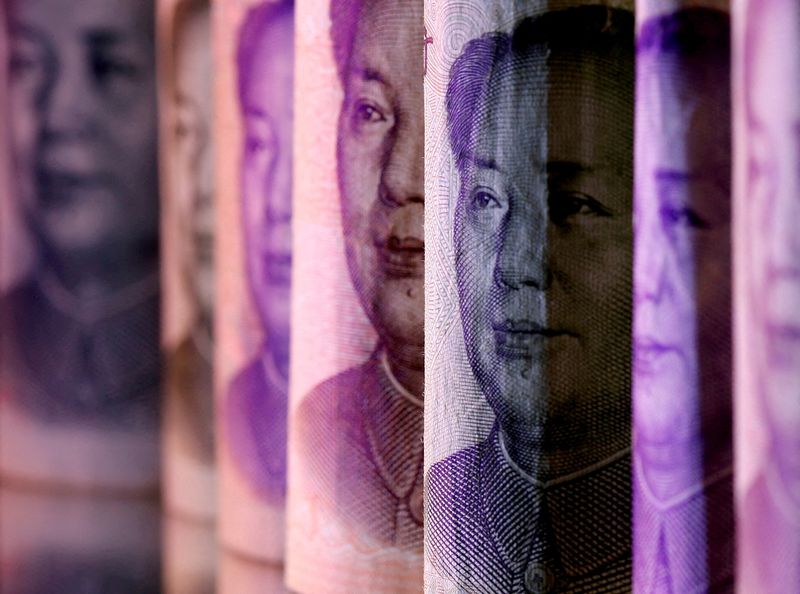
© Reuters. FILE PHOTO: Chinese Yuan banknotes are seen in this illustration taken February 10, 2020. REUTERS/Dado Ruvic/Illustration/File Photo/File Photo
SHANGHAI (Reuters) – Foreign investors continued to offload holdings in China’s onshore bonds for a 10th straight month in November, although some market watchers expect the outflow pressure to ease soon.
Foreign holdings of yuan-denominated bonds traded on China’s interbank market stood at 3.33 trillion yuan ($477.3 billion) at end-November, down from 3.38 trillion yuan a month earlier, the central bank’s Shanghai head office said on Thursday.
Overseas institutional investors dumped a net 740 billion yuan worth of Chinese bonds during the 10-month streak of outflows, the longest on record.
A breakdown of the figures showed foreigners sold a net 40.3 billion yuan of interbank yuan bonds in November, up from 34 billion yuan in October, according to data from China Central Depository & Clearing Co (CCDC), the main depository institution for China’s interbank bond market.
A weaker yuan, a stronger dollar and monetary policy divergence between China and other major economies, particularly the United States, which tightened aggressively to tame inflation, were among the key factors discouraging overseas investors from buying Chinese bonds this year, traders and analysts said.
Some investors expect such outflow pressure from China to fade as the U.S. monetary tightening cycle may come to an end soon.
Some market participants believe an expected recession in the world’s largest economy will force the Federal Reserve to loosen monetary policy next year, even as the U.S. central bank projects it will take rates higher than it previously anticipated and keep them there longer to bring down inflation.
“With further narrowing in U.S.-China government bond yields differential recently, especially at the long-end, we think the bond outflow pressure may have eased further in November,” J.P.Morgan said in a note.
The yield gap between China’s benchmark 10-year government bonds and their U.S. counterpart stood at 78 basis points at the end of November after hitting a 15-year high of around 152 basis points earlier last month. The gap has continued to shrink into December, to about 56 basis points as of Friday.
“Upward adjustment in Chinese government bonds yields improves yield differentials which will ultimately attract some foreign inflows back, especially when foreign investor positions are likely light after the hefty outflows this year despite index inclusion,” analysts at OCBC Bank said in a note.
($1 = 6.9766 yuan)
(This story has been corrected to say end-November, not end-October, in paragraph 2)
Source: Investing.com






























